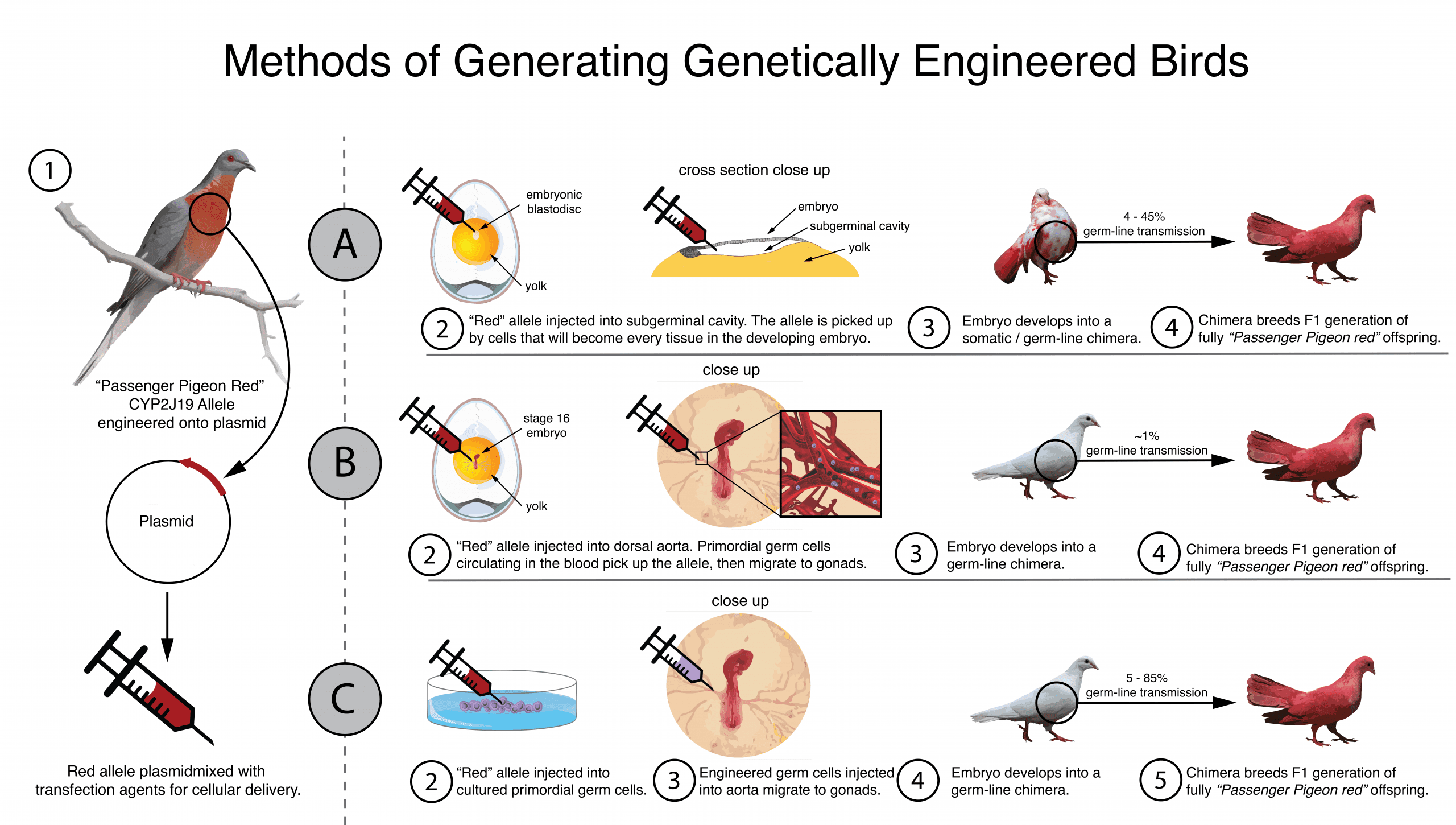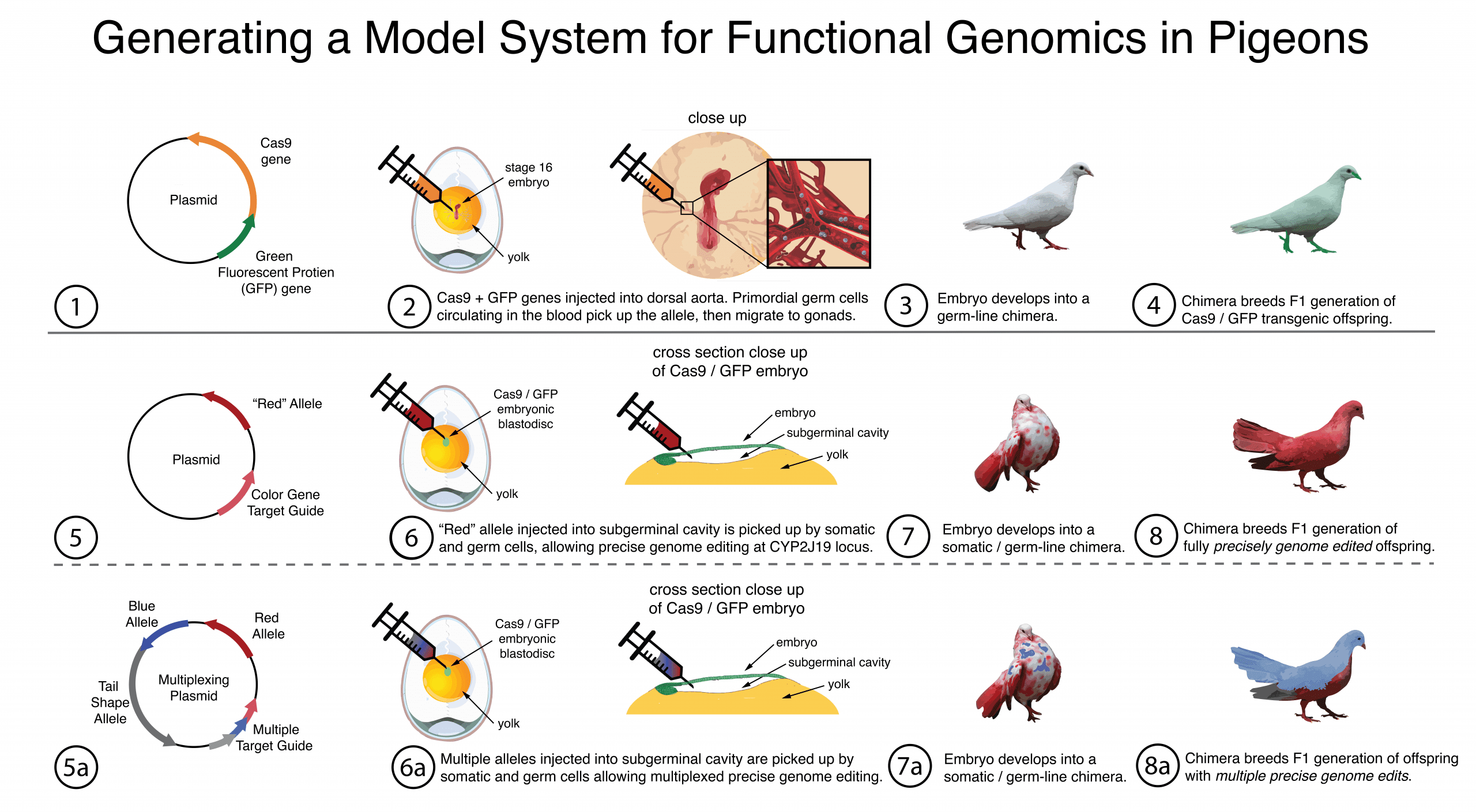Ben Novak – Revive & Restore’s Lead Researcher for The Great Passenger Pigeon Comeback – is pursuing his Ph.D. at Monash University in Melbourne, Australia. There, he will be working with scientists from Australia’s Commonwealth Scientific and Industrial Research Organisation (CSIRO) to develop a model system for testing genome editing in pigeons. Novak was awarded the Faculty Graduate Research International Scholarship and the Co-funded Monash Graduate Scholarship to fund his research. This exciting phase of collaboration between Revive & Restore and CSIRO began in May 2017.
Novak aims to produce a strain of rock pigeons capable of making genome engineering in pigeons far more efficient.
The ideal method to engineer bird genomes is germ-line transmission via cultured primordial germ cells. But culturing germ cells (the process of growing these specialized cells in the lab) is difficult, and scientists have not yet been able to culture the germ cells of pigeons. There is another path; genetic material containing the desired allele can be directly injected into an embryo, either into the subgerminal cavity or into the dorsal aorta.
Injecting the dorsal aorta allows the allele to be picked up by primordial germ cells circulating in the blood before migrating to the gonads, thereby incorporating genome edits into the germ-line. However, the drawbacks are two-fold. Only certain genome-editing technologies can be used, and the rate at which the genome edits are transmitted is extremely low (~1%). By comparison, injecting the allele into the subgerminal cavity of the embryo results in a higher transmission rate and observable phenotypes in a single generation. But again, there is a problem; a viral delivery system is required to penetrate the cell membranes of early embryonic tissues.

When engineering organisms, the size of the genome-editing tool matters. The longer the DNA code, the more difficult it is to transport into a cell for editing. The Cas9 gene is too large to package into a viral vector that is injected into the subgerminal cavity.
Cas9 is the endonuclease enzyme part of CRISPR/Cas9 system that cuts the DNA, while RNA is the CRISPR guide, directing the enzyme to specific sites in the genome so that precise genome edits are possible. CRISPR/Cas9 can even be used to edit multiple sites in the genome simultaneously – a process called multiplexing.
A strain of rock pigeons that express Cas9 in every cell could improve the efficiency of subgerminal cavity injections because half of the CRISPR/Cas9 system would already be functioning in the embryo’s tissues. In order to make CRISPR/Cas9 genome edits using subgerminal cavity injections, only the CRISPR guides and donor DNA templates, which are very small, would need to be packaged and delivered into the early embryonic tissues. This could potentially improve the efficiency of successful and ubiquitous editing of the embryo’s cells, increasing the germ-line transmission rates of this method of avian genetic engineering.

Using the subgerminal cavity injection method with a Cas9-strain of Rock Pigeons would allow the observation of phenotypes in the first chimeric generation; saving time on selecting individuals for breeding pure, fully-edited strains of genotypes that successfully capitulate the desired phenotype. If this method works, the Cas9-strain of rock pigeons could open up the ability to test hundreds of allele variants that are being discovered in the genomes of not just extinct, but also living wild pigeon species and domestic breeds. Domestic pigeon breeds exhibit more phenotypic diversity than any other domesticated animal. Studying their genomes will extend our understanding of how the evolution of genomes created the great diversity of life on this earth.
While this work will not create a new generation of Passenger Pigeons, in the next three years the world may see the first genetic traits of the Passenger Pigeon revived in living, breathing birds.



